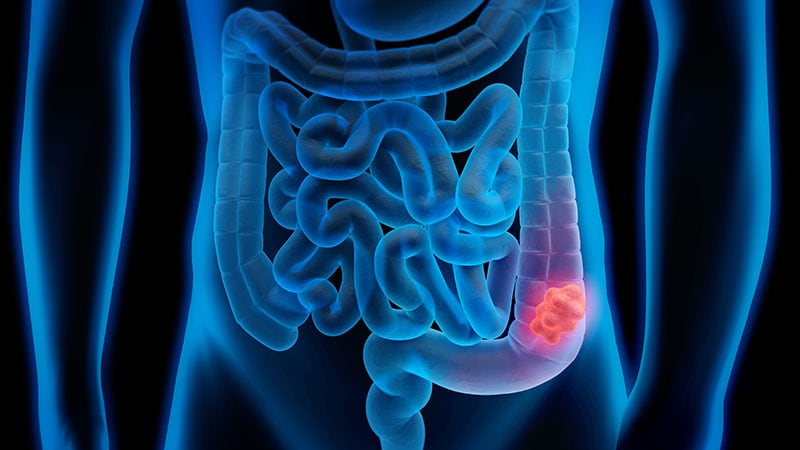These are the latest UK coronavirus stories you need to know.
PHE Changes Daily Deaths Methodology
Public Health England (PHE) hasrevised the way it compiles daily COVID-19 deathsafter an inquiry ordered by Health Secretary Matt Hancock. The change has lowered the cumulative daily death number by 5377.
Unlike the rest of the UK, England had no time cut-off for recording COVID positive death. This meant unrelated deaths were recorded as coronavirus-related because the patient had once had a positive test, and no one was ever recorded as having recovered.
Oxford'sCentre for Evidence-Based Medicinediscovered the anomaly. It calculates that the revision means the current moving average is down to around 10 deaths a day.
In terms of comparison of total deaths within Europe, the UK, and England separately, remain above Italy.
PHE said 96% of COVID-19 deaths in England occurred within 60 days or had COVID-19 on the death certificate, while 88% of deaths occurred within 28 days.
In a statement, Professor John Newton, PHE's director of health improvement, said: "The way we count deaths in people with COVID-19 in England was originally chosen to avoid underestimating deaths caused by the virus in the early stages of the pandemic.
"Our analysis of the long-term impact of the infection now allows us to move to new methods, which will give us crucial information about both recent trends and overall mortality burden due to COVID-19."
Commenting via the Science Media centre, Prof Sir David Spiegelhalter, chair of the Winton Centre for Risk and Evidence Communication, University of Cambridge, said: "The 28-day limit marks an improvement over what is currently reported, but does exclude those who die more than a month after testing, even if they have COVID on the death certificate. Including deaths up to 60 days, and later COVID-registered deaths, seems even better, but still excludes people who were not tested.
"This is a complex area and there is no truly 'correct' count. The ONS figure based on registrations should still be considered the best available, but of course even this does not include additional excess deaths that do not have COVID on their certificate."
He continued: "My real concern is with communication to the media and the public. PHE have been consistently poor in clarifying both who is included as a COVID death and the inevitable delays in reporting, and their dashboard has given the strong impression that the daily count is the actual number of deaths the day before. This in turn has influenced how the number is reported by the media, and is deeply misleading at this stage of the epidemic when the reported and the actual daily counts can be very different.
"I desperately hope that PHE can do more to prevent misinterpretation, but they have got themselves into a difficult situation in adding even more complexity to the multiplicity of COVID death statistics."
On Wednesday, PHE reported 77 UK COVID-19 deaths, taking the total to 46,706. Under the new methodology that's been revised down to 20 daily deaths and a total of 41,329.
NHS Performance
Despite NHS England stressing it is open for business its latestmonthly performance indicatorsshow it is nowhere close to business as usual after COVID-19, the Health Foundation said.
"Today’s data shows the NHS is still nowhere close to business as usual following the first outbreak of COVID-19," senior policy fellow Tim Gardner commented. "At the end of June, nearly half of all people waiting for planned hospital care (48%) had waited beyond the 18-week standard – the worst ever performance since the standard was set in 2012. The number of people being referred to specialist care and starting treatment, including for suspected cancer, has increased from last month but remains well below normal levels."
Nuffield Trust Deputy Director of Research Dr Sarah Scobie said: "These figures are a serious warning against any hope that the English NHS can get planned care back to normal before winter hits. The number of patients starting outpatient treatment is still a third lower than usual, and getting back to 100% by September will be a tall order."
Professor Karol Sikora, whocomments on cancer issuesforMedscape UK,tweeted:"Encouraging to see urgent referrals for cancer are climbing back up, but they're still nowhere near where they need to be. I fear there are far more people who have developed cancer and have no idea."
BMA Council Chair Dr Chaand Nagpaul commented: "These latest set of NHS performance stats are deeply concerning and paint a very bleak picture for the future delivery of patient care if urgent intervention is not forthcoming. This is despite doctors and NHS staff working tirelessly around the clock to deliver care in increasingly challenging circumstances."
England's New Look Tracing App
NHS England's second attempt at building a working contact tracing smartphone app is to be trialled on the Isle of Wight, the same test site used for the first, unsuccessful, app.
Newham is London and NHS volunteer responders are also involved.
The new version uses Apple/Google protocols and Bluetooth technology without central data collection. Northern Irelandlaunched a similar systemat the end of July.
Users will be asked to scan QR 'venue check-in' codes when entering some buildings so they can be alerted to any outbreaks.
England's Health Secretary Matt Hancock said: "We’ve worked with tech companies, international partners, privacy and medical experts to develop an app that is simple to use, secure and will help keep the country safe."
Test and trace chair Baroness Dido Harding conceded: "There is no silver bullet when it comes to tackling coronavirus. The app is a great step forward and will complement all of the work we are doing with local areas across the country to reach more people in their communities and work towards our vision of helping more people get back to the most normal life possible at the lowest risk."
England's latesttest and trace statisticsto 5 August show little change in performance with 79.7% of positive cases referred to the service being reached and asked to provide information about their contacts. Of these, 74.2% were reached and asked to self-isolate.
BMA Survey Highlights Long COVID Challenge
The latest data released from the BMA's member survey with 4120 respondents finds significant levels of long-term COVID-19 symptoms, known as long COVID, in both patients and doctors.
It found 31% have seen or treated patients with symptoms they believe are a longer-term effect of COVID-19. These included chronic fatigue, reduced exercise capacity, muscle weakness, loss of sense of smell, dizziness, and concentration difficulties.
Around a quarter of doctors believe they've had COVID-19, 12% were confirmed with testing, 14% were not.
Dr David Strain, BMA medical academic staff committee co-chair, commented: "The increasing evidence that COVID-19 patients can suffer long-lasting symptoms, irrespective of the severity of the initial infection, requires detailed study to understand what optimum treatment would be, and, preferably, how to prevent it occurring in the first place.
"Until this is known, it is imperative that the Government and the NHS does more to protect the medical community from infection."
NHS Worker Deaths Investigations
Medical examiners in England and Wales are to retrospectively investigate the COVID-19 deaths of hundreds of health and care workers,The Independentreported.
They'll be asked to state whether they have reason to suspect the infection was acquired in employment. This could also result in Health and Safety Executive investigations.
It quotes Dr Rinesh Parmar, chair of the Doctors’ Association UK, saying that while the move is a "positive step", full coroner's investigations are needed into all health worker deaths.
Children Account for 1% of COVID-19 Cases
Children account for just 1% of confirmed COVID-19 cases, according to Public Health England (PHE) research published inArchives of Disease in Childhood.
The study used PHE, NHS, and GP data from England, and found:
- Children were nearly 6 years old on average when they tested positive for the virus
- 53% of cases were among boys
- Test numbers and positive results were highest among infants, particularly under-3 months, and among 1-year-olds
- COVID-19 case fatality rate for children was estimated to be less than 0.5%
The authors concluded: "Children accounted for a very small proportion of confirmed cases despite the large numbers of children tested. SARS-CoV-2 positivity was low even in children with ARI [acute respiratory infection]. Our findings provide further evidence against the role of children in infection and transmission of SARS-CoV-2."
Commenting, Jonathan Ball, professor of molecular virology, University of Nottingham, said: "This data is heavily skewed by the very fact that the only children tested were those presenting at a GP clinic with well-defined respiratory illness and fever. We know from other studies that children, particularly young children, show minimal symptoms of SARS2 infection and often have no symptoms at all. Therefore, the fact that children weren’t often amongst confirmed cases of COVID-19 isn’t so surprising. To imply that children aren’t an important source of the infection isn’t really fully supported by the evidence here – the study doesn’t look at the infectiousness of children."
3.4m People in England Have Had COVID-19, Study Suggests
Imperial College London'sREACT-2 researchbased on home finger prick testing of more than 100,000 volunteers suggests 3.4m people in England have had COVID-19. That's 6% of the population.
Health care workers (12%) were more likely to be infected than non-key workers (5%).
There were regional differences, with 13% of people with antibodies in London and less than 3% in the South West.
Ethnicity differences were also reported with antibodies in 17% of Black volunteers, 12% in Asian and other ethnic minorities, and 5% in White participants.
Research lead Professor Graham Cooke commented: "Using the finger-prick tests suitable for large scale home testing has given us clearest insight yet into the spread of the virus in the country and who has been at greatest risk.
"These data will have important implications as decisions [are taken] to ease lockdown restrictions in England."
Pollution and COVID-19 Link?
Previous studies have suggested a link between long-term air pollution exposure, more severe COVID symptoms, and greater mortality risk. However, that association is not confirmed byOffice for National Statisticsresearch.
It did find early cases, especially in London, were in more polluted areas but that trend levelled off later.
Its modelling found "when controlling for ethnicity, air pollution exposure has no statistically significant impact on COVID-19 deaths".
Overall, it said more work was needed to "disentangle factors" and: "Ultimately, our analysis is inconclusive."
The mandatory wearing of face coverings in more settings in most of the UK is reflected in otherONSdata. It found the proportion of adults wearing a face covering at some point when leaving the home was at 96% for the second consecutive week.


